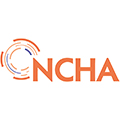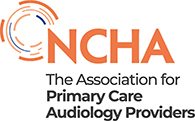01 June 2020
NCHA Member update: New Covid-19 guidance and updates on furlough and SEISS - 1 June 2020
- New Covid-19 guidance and FAQs
- Staff management – test and trace
- UK Covid-19 guidance
- CJRS and self-employment income support scheme
- How to navigate the lockdown – a short guide for members
|
1. New Covid-19 guidance and FAQs AIHHP, BAA, BSA and BSHAA have today published an updated version of their joint guidance and added a new FAQ document. The main change to the guidance is adding anosmia symptoms to the screening questions following the updated Covid-19 case definition on 18 May. The organisations reiterate that the “emphasis remains on providing care remotely first and whenever possible only offering face to face care where it is clinically necessary and safe to do so”. Read the full statement. |
|
2. New: Staff management – test and trace (England) The Department of Health and Social Care (DHSC) has published NHS test and trace: how it works guidance. The DHSC directs all health and care workers to Public Health England (PHE) guidance. PHE updated this guidance on 31 May, and it now includes how to respond to test and trace notifications and what to do if there’s a PPE breach. It advises that all staff should self-isolate in line with official guidance and also:
The guidance also covers a range of other situations, and we recommend all members in England read the full guidance. In the guidance, it advises essential workers and employers to access a test via the following routes: The general public is advised to book testing using the NHS website. People without access to the internet are advised to order a test by phoning 119. |
|
3. UK Covid-19 guidance Healthcare providers should follow the UK wide infection prevention and control (IPC) guidance. In addition to this, UK governments have published Covid-19 guidance to help businesses mitigate risks in different settings. You might find the following guidance helpful with local planning:
England
Northern Ireland
Scotland
Wales Has not yet issued updated guidance, but you can still access the 7 April guidance here. |
|
4. New: CJRS and self-employment income support scheme Here is an update on the coronavirus job retention scheme (CJRS) and self-employment income support scheme (SEISS).
CJRS The chancellor has announced three changes to CJRS:
The government does not expect smaller employers who have NIC bills covered by the Employment Allowance to be significantly affected by that part of the tapering. Please note, HMRC has advised that “If employees are unable to return to work, or employers do not have work for them to do, they can remain on furlough, and the employer can continue to claim the grant for their full hours under the existing rules”. We expect more detailed guidance by 12 June. Members can email us at [email protected] if you have any questions or need further support with this or other employment law questions.
SEISS On Friday 29 May, the chancellor also confirmed the extension of SEISS. Eligible self-employed people will be able to claim a second and final SEISS grant in August. The grant will be taxable and worth 70% of the average monthly trading profits for three months. It will be paid out in a single instalment and capped at £6,570 in total. The eligibility criteria for the second grant will be the same as for the first grant. Please note:
We expect more information about the second SEISS grant by 12 June. |
|
4. How to navigate the lockdown – a short guide for members If you are struggling to navigate out of the lockdown, you are not alone. The pandemic is a complex issue and made more complicated by the fact all UK governments have used different language, key tests, and priorities to describe how they plan to ease restrictions locally. To help you navigate out of the lockdown, we have analysed 100s of pages of government and NHS plans and provide a summary below.
What the plans have in common Each country in the UK might have its strategy for easing lockdown restrictions, but there are some important and universal themes. Coronavirus is not a short-term crisis. All UK governments agree; coronavirus is not a short-term crisis, but a long-term challenge. As a society, we need to follow all standard infection control procedures for some time to come. These procedures include social distancing, best-practice hand and respiratory hygiene, and official self-isolation guidance. In hearing care, these procedures will be enhanced and include PPE and other protocols to manage Covid-19 risks. We are developing some training resources and tools to help members with this and will publish these shortly.
No fixed route to the ‘next normal’ The infection rate (R) is at the heart of risk management strategies, and all UK governments will be monitoring the ‘R rate’ closely. The R, in part, explains why each UK country is easing restrictions at different times. You can learn more about R here. Governments will use R data to help inform when restrictions can be eased and whether new restrictions should be put in place. Using the data could lead to delays in implementing the phased reopening of society and the economy, or some services will open only to be asked to close temporarily again. Also, R estimates are based on modelling assumptions. As testing and tracing improve it should be possible to have more localised estimates of R. So, we could see more localised planning in the months and years ahead – with some services allowed to open in some parts of the country but not others. That is why there has not been a fixed timeline or route back to the ‘next normal’. It is also why the NCHA advises members to plan a dynamic response to Covid-19 related risks. We will be issuing more detailed guidance on this shortly.
One step at a time All UK government strategies explain a phased approach which we broadly summarise as:
The governments will do this because, as explained above, it is not possible to know what impact each phase of reopening will have on R. To simplify further, all UK plans for easing the lockdown include the same goal: to slowly ‘reopen society’ and assess the impact each stage has on the spread of the virus:
In all scenarios the optimal strategy for community audiology is to have clear plans in place based on the local Covid-19 risk stratification approach.
Variation in UK plans Although there are common themes across all UK plans on easing the lockdown, there are also important differences and yet-to-be-confirmed details. For example:
To talk to a member of the NCHA team about any of this in more detail, please email [email protected]. We will arrange a tailored session to discuss your specific planning needs. Meanwhile, you can access the full documentation below: Fully strategic documents:
|

Press enquiries
Media enquiries should be directed to [email protected] or call 020 7298 5110.
We are happy to put you in touch with our expert policy advisers who can comment on a variety of issues.
You can also follow us on Twitter and LinkedIn.

 Your hearing and aural health
Your hearing and aural health  Commissioners and Policymakers
Commissioners and Policymakers  Member support and guidance
Member support and guidance News and views
News and views
 Hearing map
Hearing map
